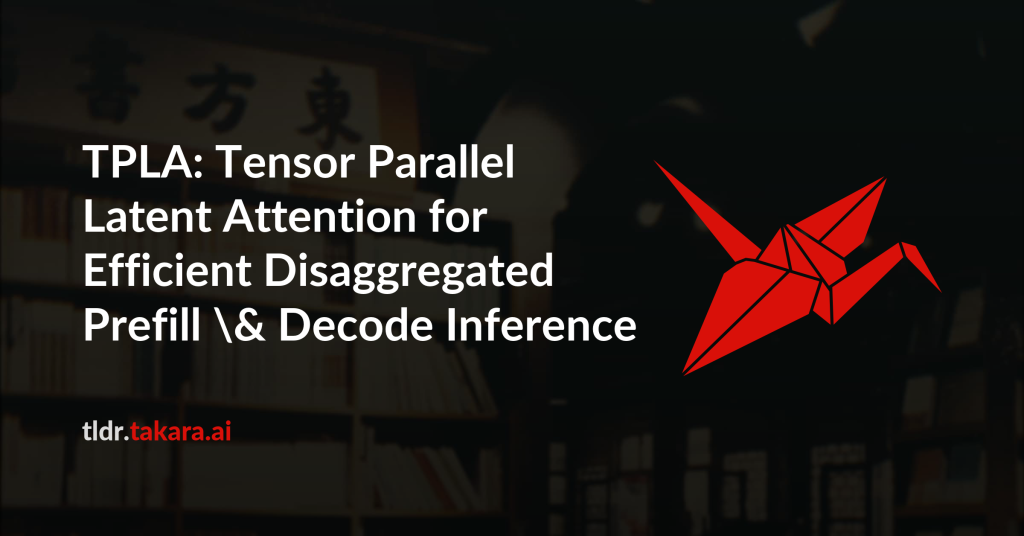Multi-Head Latent Attention (MLA), introduced in DeepSeek-V2, compresses
key-value states into a low-rank latent vector, caching only this vector to
reduce memory. In tensor parallelism (TP), however, attention heads are
computed across multiple devices, and each device must load the full cache,
eroding the advantage of MLA over Grouped Query Attention (GQA). We propose
Tensor-Parallel Latent Attention (TPLA): a scheme that partitions both the
latent representation and each head’s input dimension across devices, performs
attention independently per shard, and then combines results with an
all-reduce. TPLA preserves the benefits of a compressed KV cache while
unlocking TP efficiency. Unlike Grouped Latent Attention (GLA), every head in
TPLA still leverages the full latent representation, maintaining stronger
representational capacity. TPLA is drop-in compatible with models pre-trained
using MLA: it supports MLA-style prefilling and enables efficient
tensor-parallel decoding without retraining. Applying simple orthogonal
transforms — e.g., the Hadamard transform or PCA — before TP slicing further
mitigates cross-shard interference, yielding minimal accuracy degradation. By
reducing the per-device KV cache for DeepSeek-V3 and Kimi-K2, we achieve 1.79x
and 1.93x speedups, respectively, at a 32K-token context length while
maintaining performance on commonsense and LongBench benchmarks. TPLA can be
implemented with FlashAttention-3, enabling practical end-to-end acceleration.

